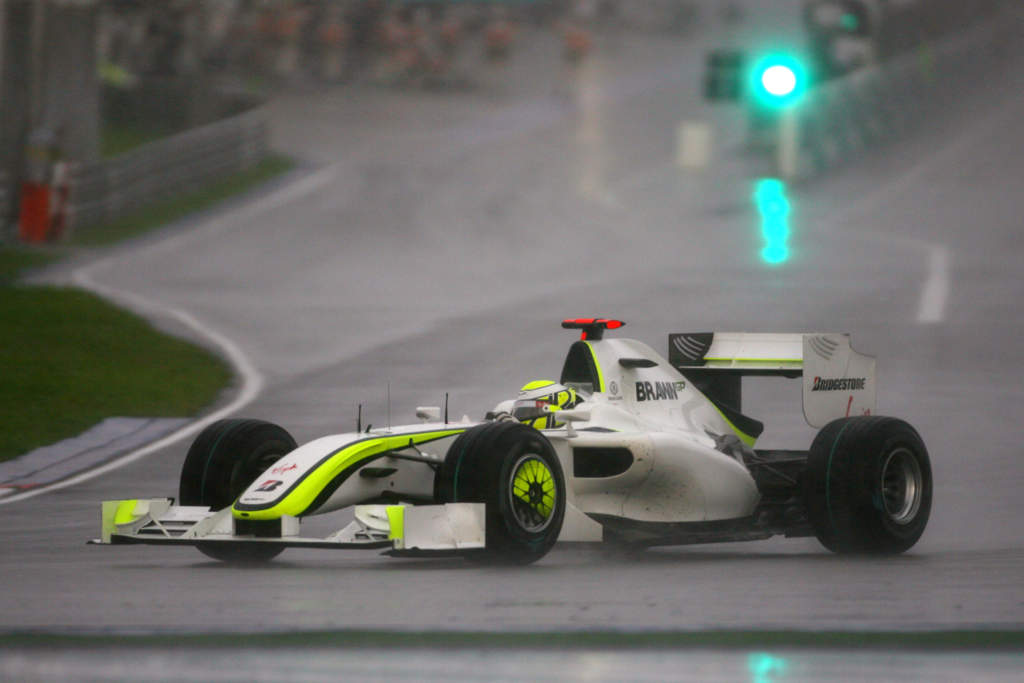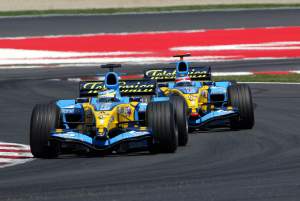Up Next

The awarding of half points was the most controversial element of Formula 1’s Belgian Grand Prix and is only the sixth time in the world championship’s history it has happened.
It means the 2021 drivers’ and constructors’ championship standings have the rare sight of drivers and teams with decimal points in their scores.
The previous races that have ended the same way, though, were slightly less contentious simply for the fact they featured more than just three laps under the safety car…
2009 Malaysian Grand Prix
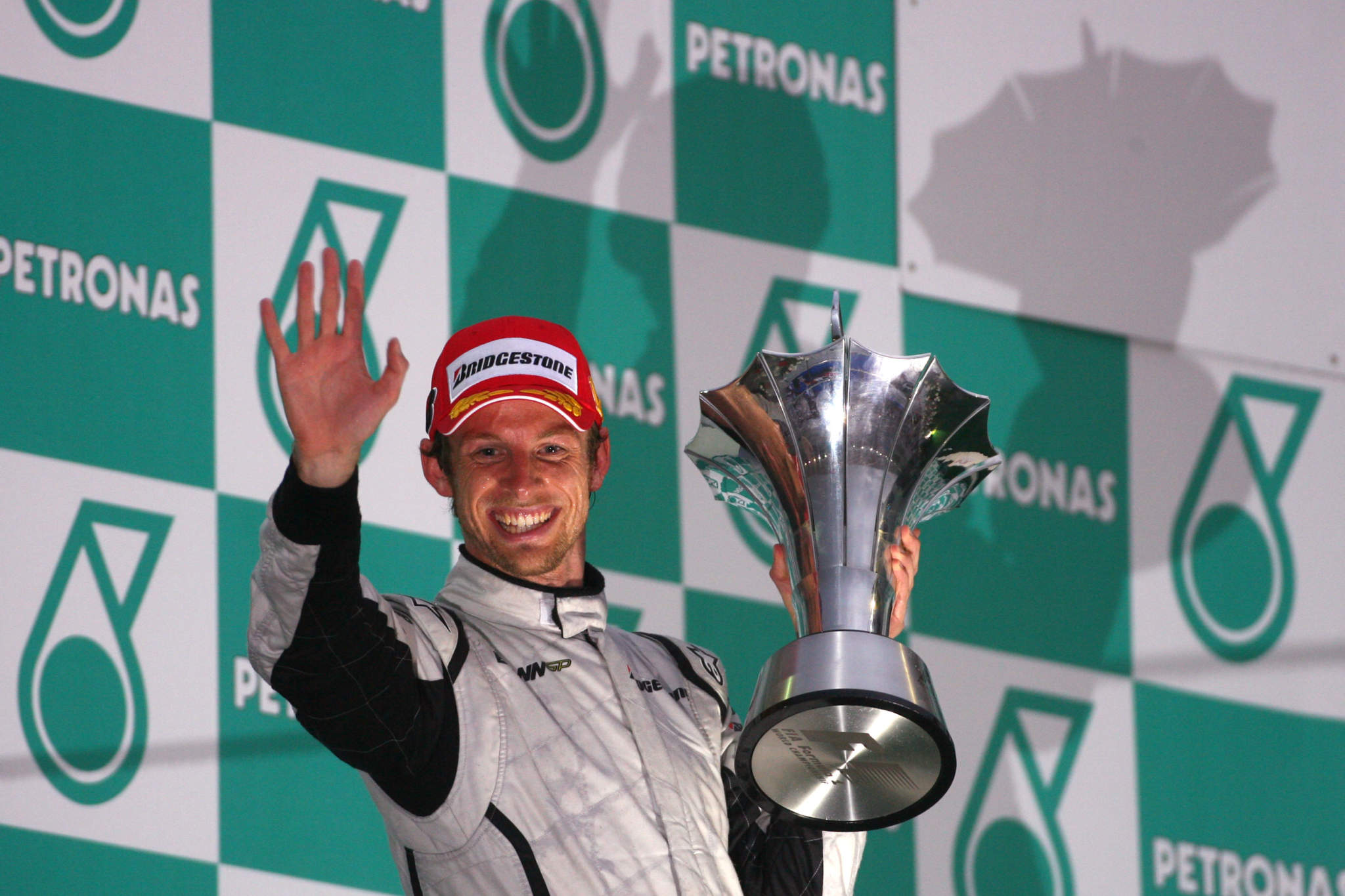
Scheduled distance: 56 laps
Race declared at: 31 laps
Race winner: Jenson Button, Brawn
This Sepang race started in dry conditions and Jenson Button fell from first to fourth on the opening lap in his Brawn allowing Nico Rosberg to lead for Williams.
But the threat of rain was imminent. When Kimi Raikkonen made his first stop on lap 18, Ferrari sent him back out on full wet tyres on a bone-dry circuit! The gambit failed.
Others stayed on slicks at their first stops, after which Button was back in the lead from Rosberg and Jarno Trulli. With rain falling by now they were among 12 drivers to dive back into the pits on lap 22 and change onto full wets but conditions were still tough to read.
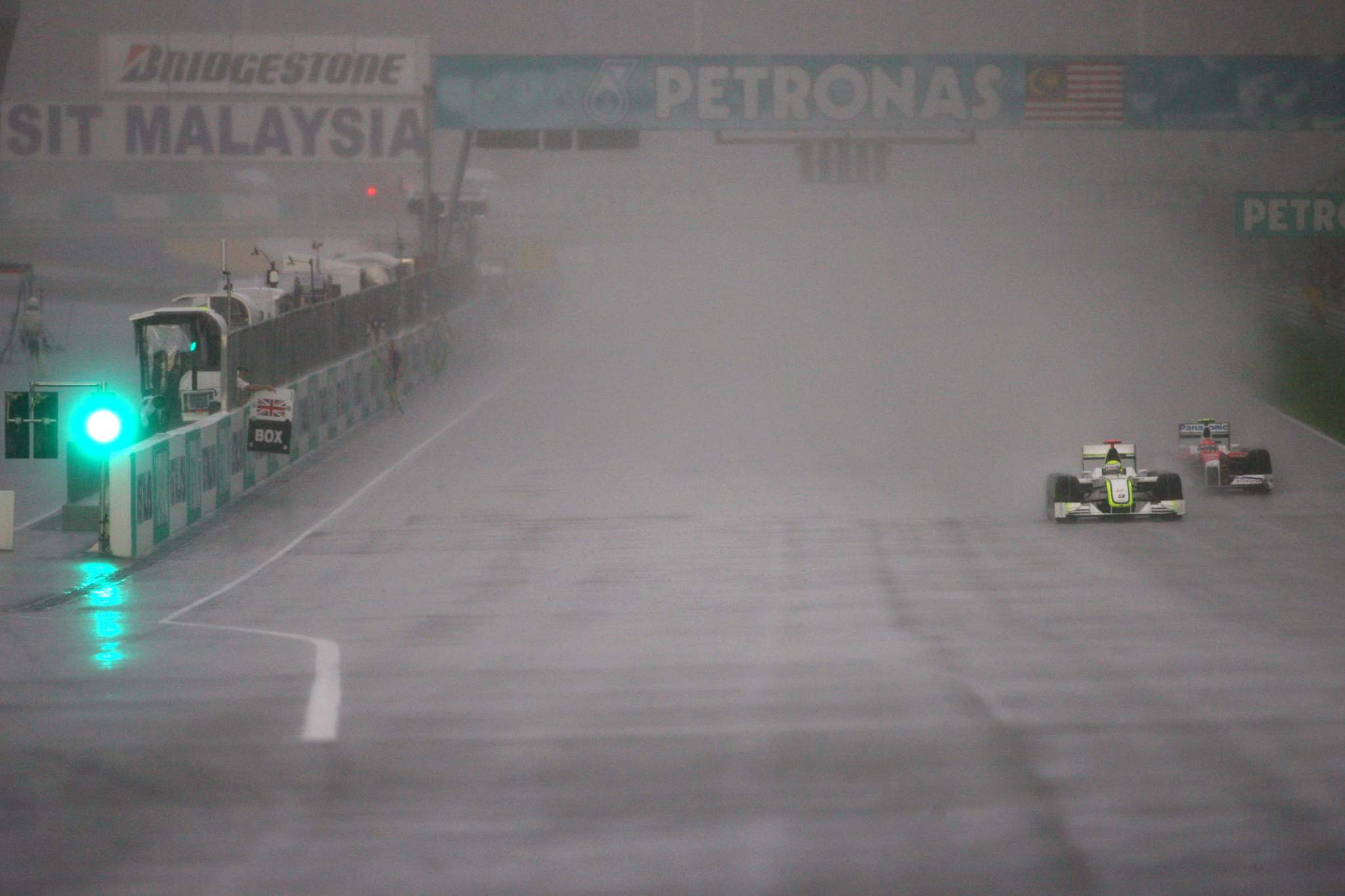
Timo Glock opted for intermediates and rose swiftly up the order, prompting another round of pitstops for the leaders to shed their full wets only a few laps after taking them.
Button rejoined just behind Glock and passed him but with the rain increasing Glock dived into the pits for full wets. Intermediates were suddenly useless. Cars left the track like spinning tops in increasing numbers (Sebastian Vettel among them).
Button made it back to switch to wets and rejoined still ahead of Nick Heidfeld and Glock. The conditions worsened and the safety car was deployed with the track soaked and light fading.
Then the race was red-flagged, giving us the now-famous sight of Kimi Raikkonen (forced out by a car problem) enjoying an ice cream while his colleagues endured a lengthy wait in the rain to see if racing would resume.
It didn’t. Button was declared the winner ahead of Heidfeld and Glock – Heidfeld benefitting from the countback rule after spinning just before the red flag.
1991 Australian Grand Prix
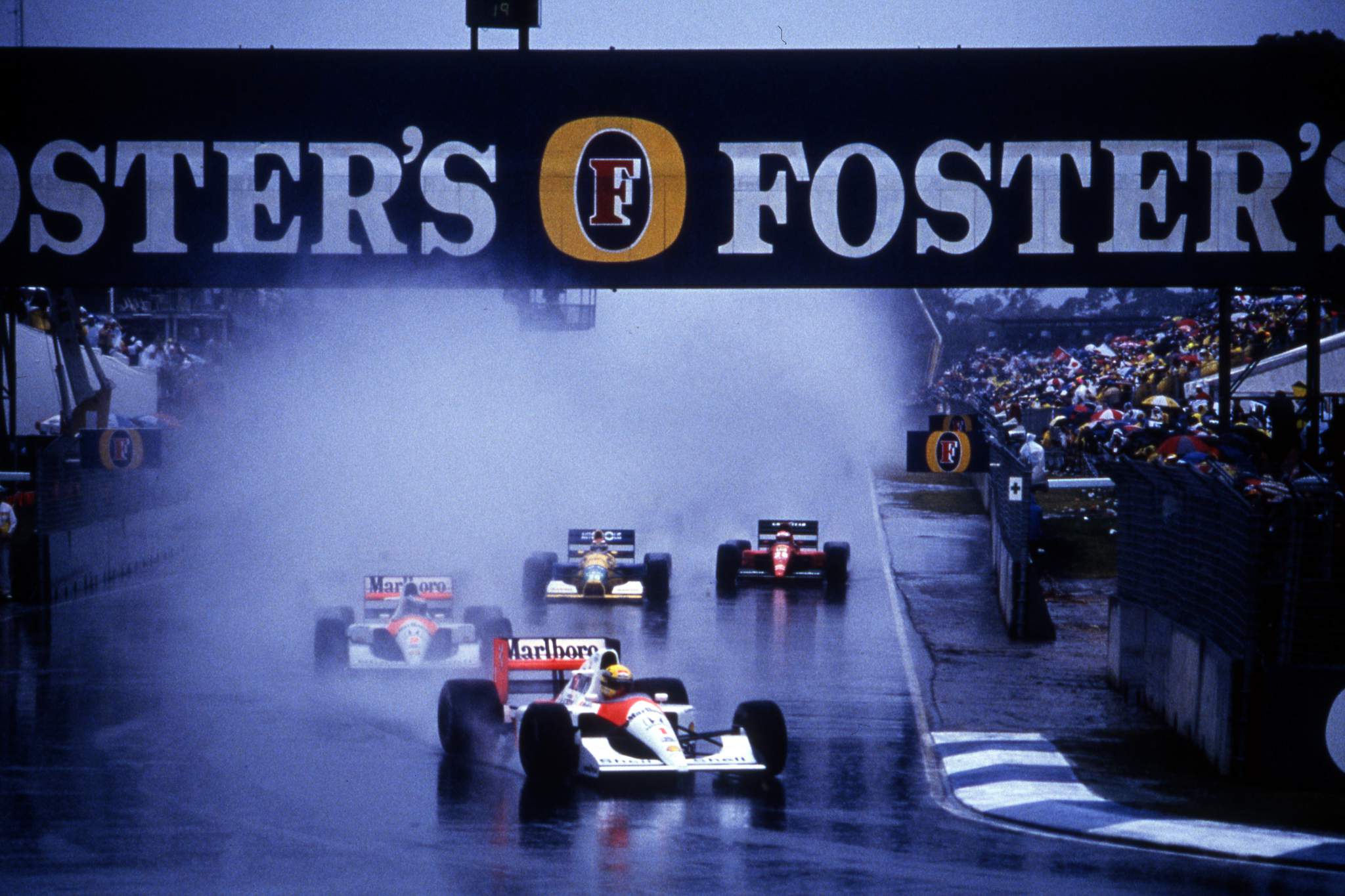
Scheduled distance: 81 laps
Result declared at: 14 laps
Race winner: Ayrton Senna, McLaren
This race, won by Ayrton Senna and featuring the McLaren driver gesticulating wildly for the Adelaide-based grand prix to be abandoned during miserable conditions, was the shortest in F1 history until last Sunday.
Heavy rain and dire visibility gradually turned this into a chaotic affair even though everyone survived the first four laps. The drivers then started to fall, with Satoru Nakajima the first on lap five. Then the Benettons of Michael Schumacher and Nelson Piquet collided, leading to Ferrari’s Jean Alesi and Modena Lamborghini driver Nicola Larini crashing on the Brabham Straight.
Three laps later Pierluigi Martini’s Minardi speared into the wall just short of Larini’s car to add to the wreckage. But the race went on despite the multiple recoveries being undertaken.
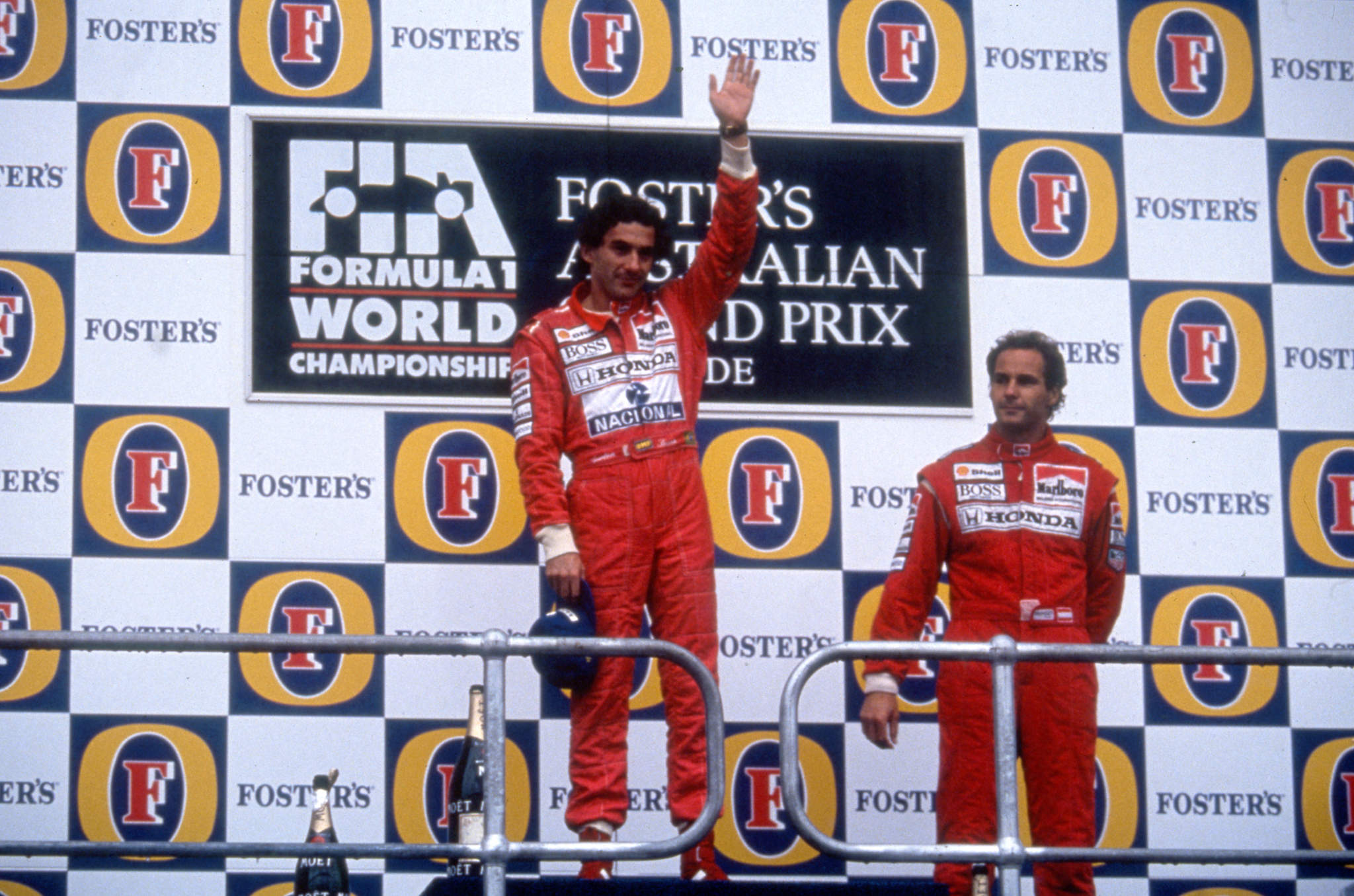
Nigel Mansell, chasing Senna for the lead, spun into the wall on lap 15. Michele Alboreto and Gerhard Berger also had spins and Mauricio Gugelmin crashed his Leyton House.
One lap later the race was red-flagged. The results were taken on countback (as they were at Spa last weekend) to lap 14 which meant Mansell finished second.
“Everything was OK other than it was a complete joke,” he said.
1984 Monaco Grand Prix
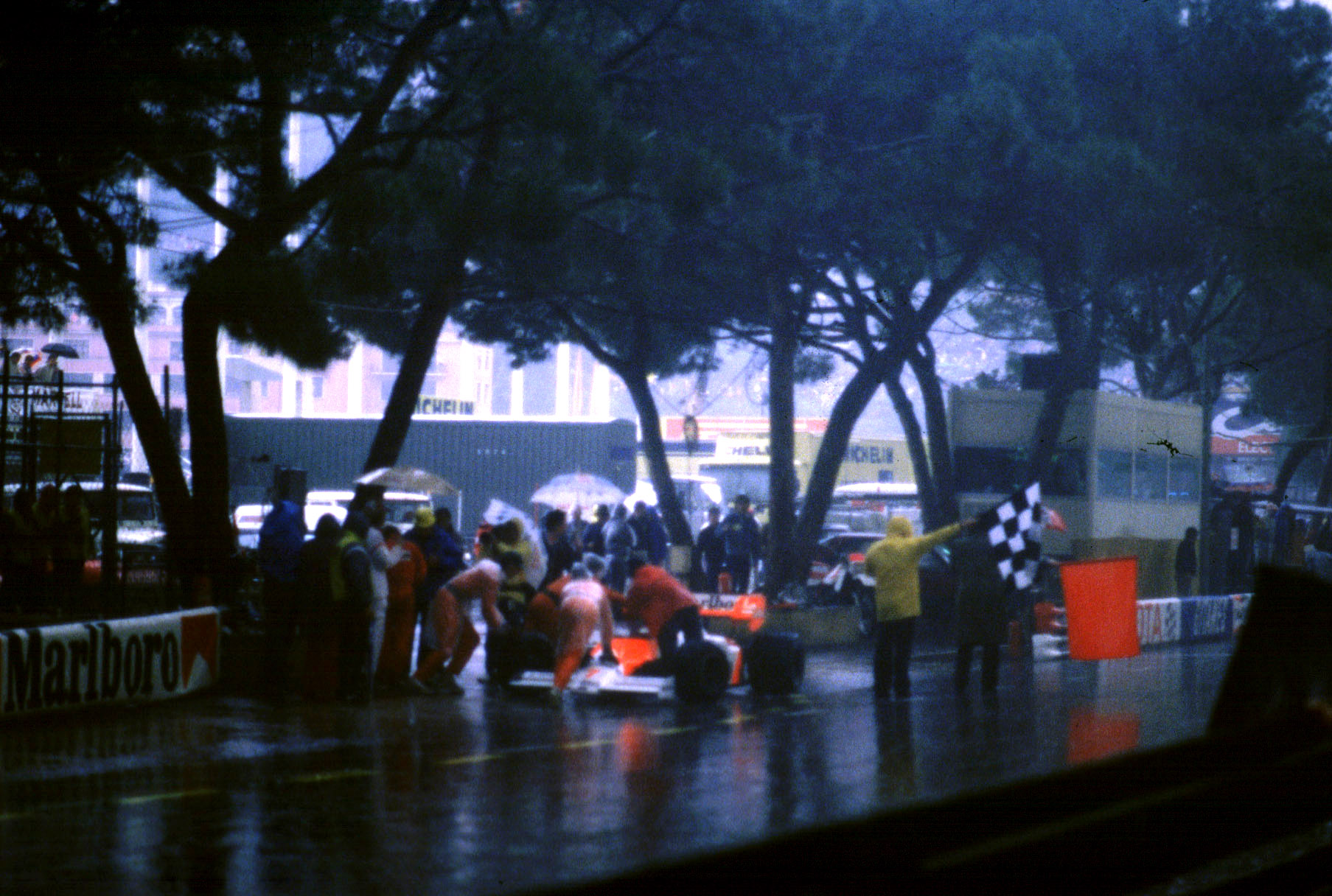
Scheduled distance: 76 laps
Result declared at: 31 laps
Winner: Alain Prost, McLaren
This is perhaps the most famous half-points race in F1 history, with Alain Prost winning as Toleman driver Ayrton Senna closed in on him.
Prost led the first 10 laps from pole position before being passed by Lotus driver Mansell, who then lost control on the hill towards the Casino when he hit a slippery, painted white line. That handed the lead back to Prost, who was 29 seconds up the road from team-mate Niki Lauda.
On lap 24, Senna took second place, with a 34.210s gap to the leader. He began to hack time out of Prost – three seconds on lap 23, two-and-a-half on lap 24, one second on lap 25 and 1.4s on lap 26. At this point, the rain intensified and with Prost nursing a brake vibration, a red flag was shown when he was in the tunnel on lap 32.
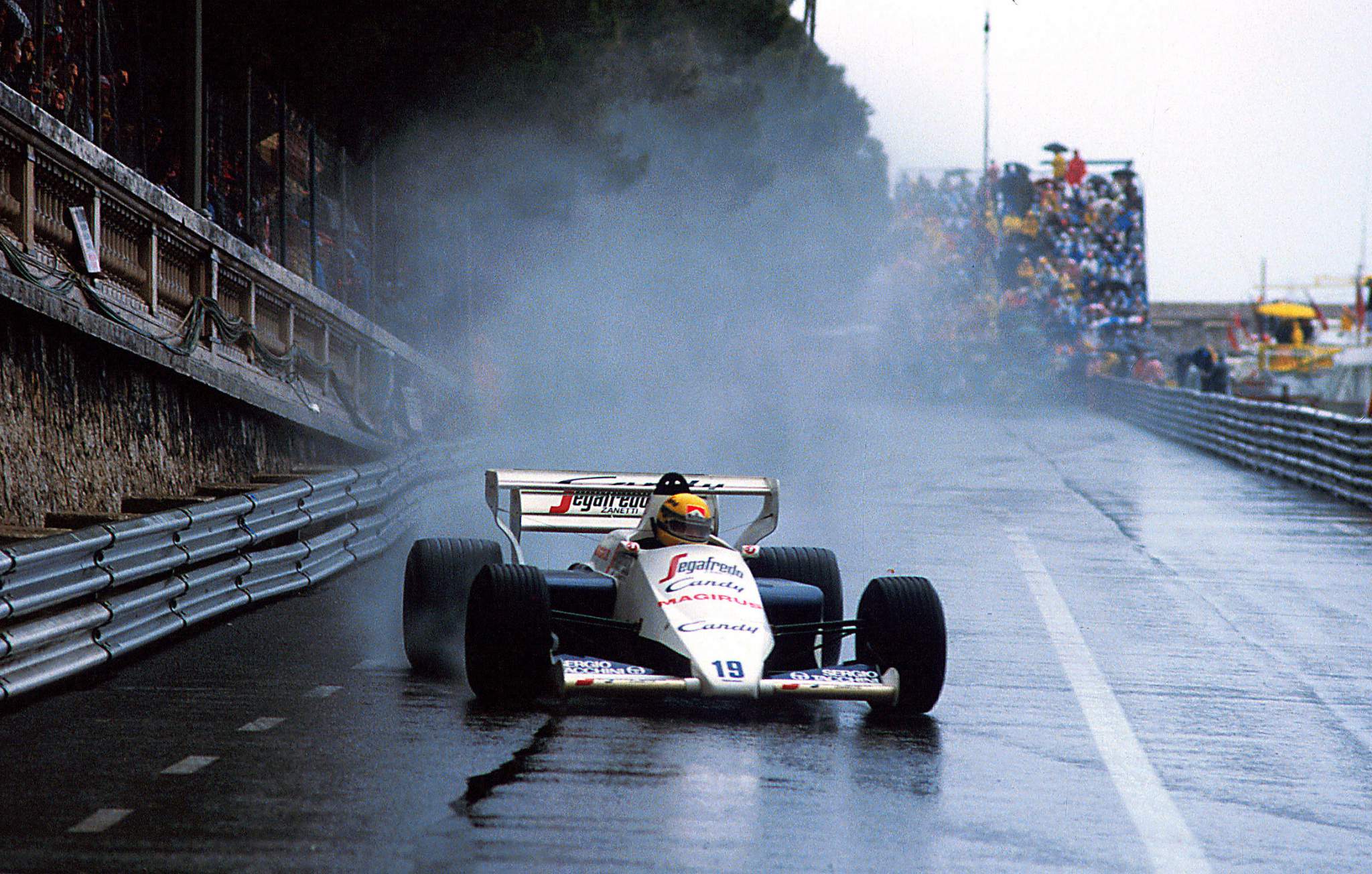
The finishing footage everyone remembers with Senna bearing down on Prost and sweeping past Prost is actually the end of that lap, by which time the race had already been stopped.
However, while clerk of the course Jacky Ickx showed another red flag there, the ACM’s Michele Boeri showed a chequered flag – officially declaring the race over and eliminating the chance of a restart.
The result was based on positions on lap 31, giving Prost victory by 7.446s. Had the race lasted longer, Senna might well have won – although he was carrying suspension damage that may or may not have eventually led to his retirement.
Stefan Bellof took third for Tyrrell and is often said to have been catching both. This is true to a point as he’d taken a few seconds out of Senna and was quicker than Prost. But on the final two racing laps he and Senna were lapping at near-identical pace with almost 14 seconds between them. Later that year, Rene Arnoux was promoted to third after Tyrrell’s 1984 results were expunged.
1975 Austrian Grand Prix
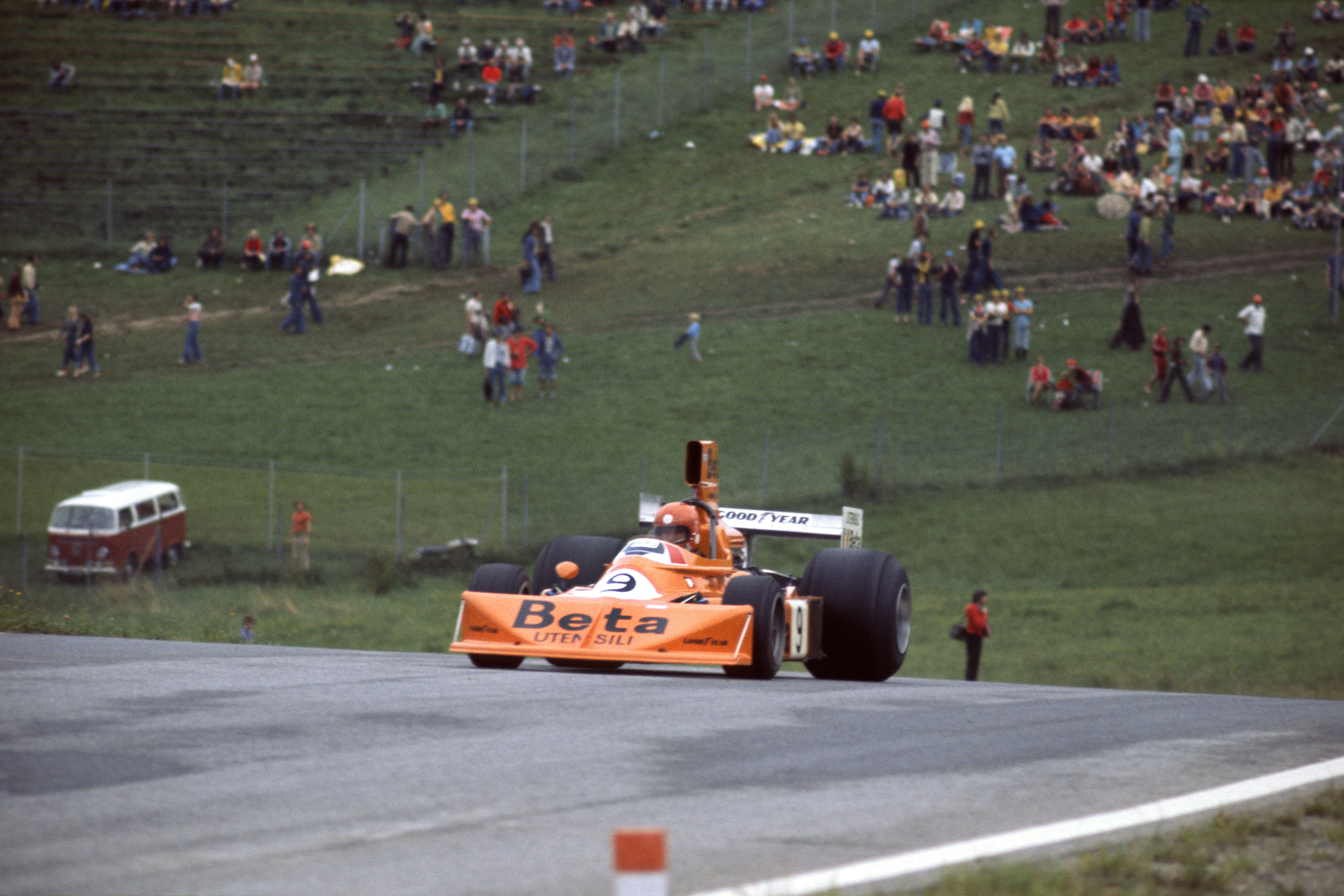
Scheduled distance: 54 laps
Result declared at: 29 laps
Winner: Vittorio Brambilla, March
Race day at the 1975 Austrian Grand Prix was already a tragic one thanks to Mark Donohue’s crash in the morning warm-up after his Penske-run March suffered a tyre failure. While the consequences of the accident weren’t known on the day, Donohue died three days later of a cerebral hemorrhage, while a marshal who had been hit also succumbed to his injuries.
Heavy rain that struck when the cars were on the grid on slicks had already delayed the start of the race at the fearsome Osterreichring when the race finally got underway in difficult conditions.
🇦🇹 AUGUST 17, 1975
First F1 win
First podium
First fastest lapQuite a day for Vittorio Brambilla#OnThisDay🗓 pic.twitter.com/5LQ8ulOycv
— Formula 1 (@F1) August 17, 2016
Ferrari driver Niki Lauda led from pole position early on, but March driver Vittorio Brambilla was the star. From eighth on the grid, he charged towards the front and took the lead on lap 19 with a double pass on Hesketh driver James Hunt, who was now leading but down on power, and Lauda.
The conditions were so bad that there was lobbying to stop the race, which duly happened at the end of the 29th lap. As a chequered flag was shown rather than the red flag, the race was over – much to the relief of Brambilla, who spun and hit the barrier after passing the flag – although he was able to get going again to complete his victory lap.
1975 Spanish Grand Prix
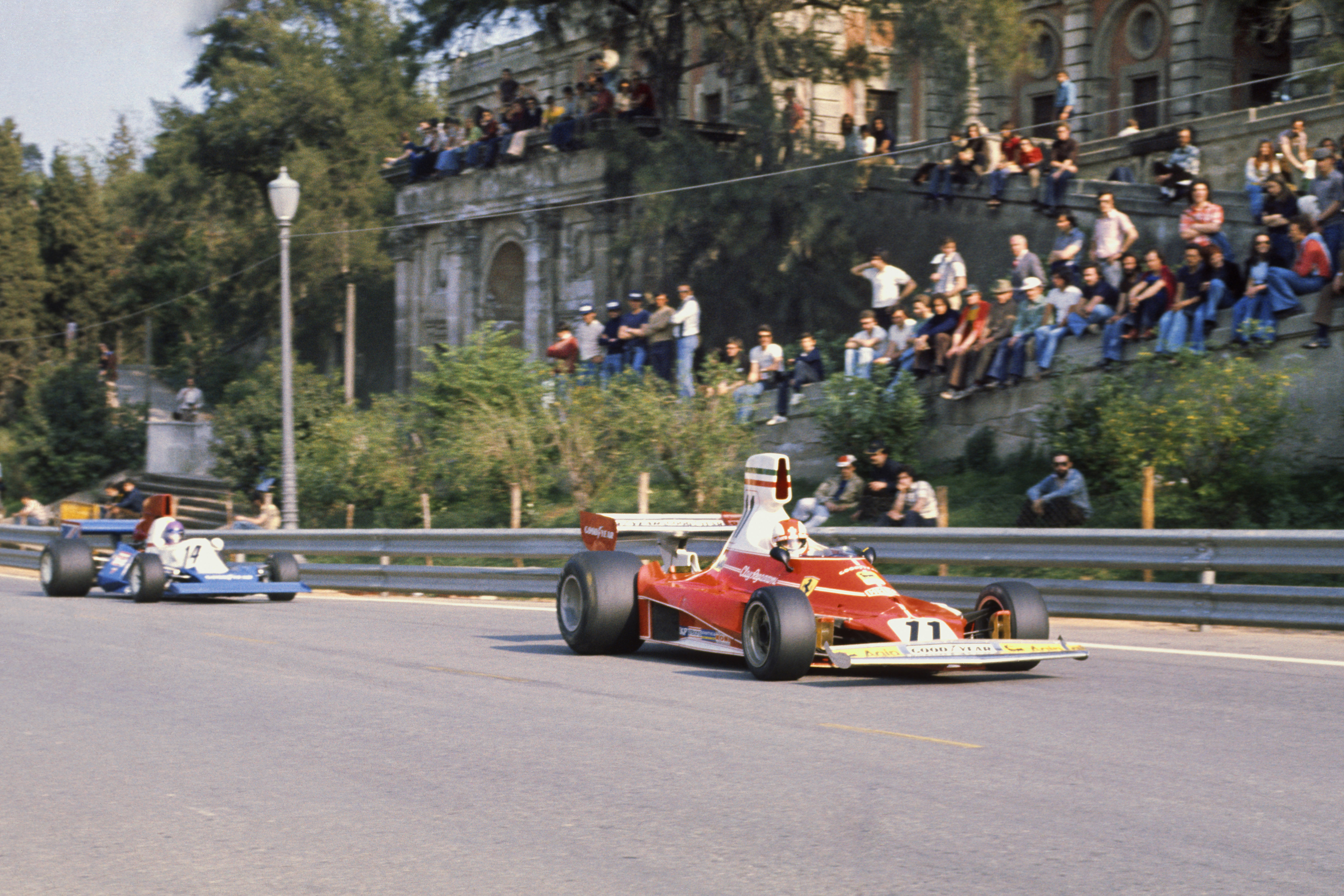
Scheduled distance: 75 laps
Result declared at: 29 laps
Winner: Jochen Mass, McLaren
The 1975 Spanish Grand Prix at the high-speed Montjuich Park street circuit in Barcelona is an infamous example of the kind of shambles that Formula 1 thankfully grew out of long ago.
Right from the start, it was a fractious event with drivers shocked to discover the appalling state of the safety barriers, with loose or entirely absent bolts, shaky fence posts and gaps between panels. Some wouldn’t have stood up to being leaned on aggressively, let alone being hit by an F1 car. Unsurprisingly, many drivers refused to run on the first day of practice
The organisers committed to improving the situation overnight but the small number of people dedicated to the task was wholly inadequate, leading to the F1 teams themselves getting involved in working on them.
Amid all sorts of legal threats from the organisers and commercial pressures, qualifying did take place with Ferrari’s Niki Lauda taking pole position. World champion Emerson Fittipaldi completed a ‘flying’ lap almost 50 seconds off the pace and went home.
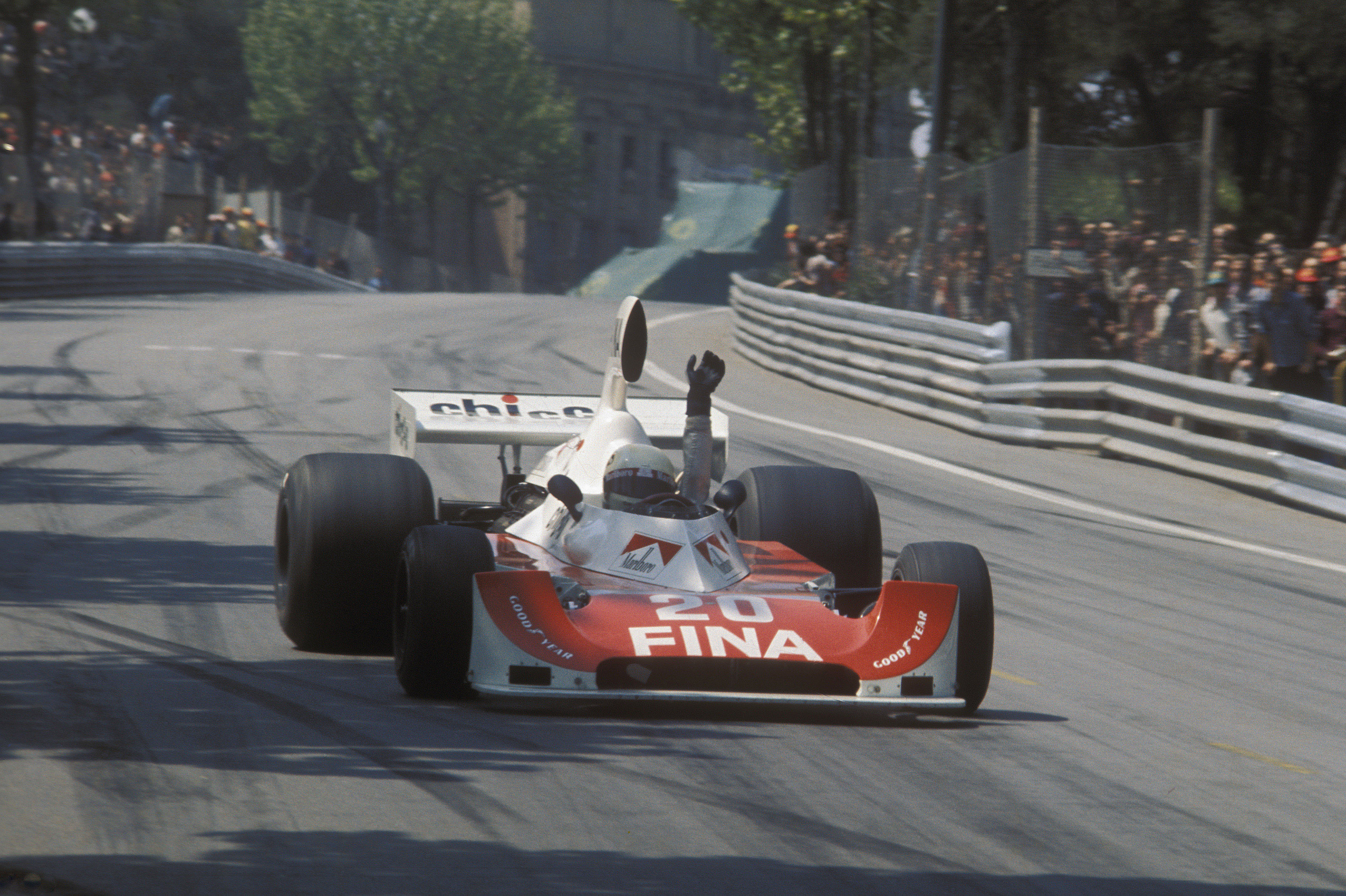
Things went wrong in the race immediately, with Brambilla hitting Mario Andretti to trigger an accident that also took out Lauda and damaged the other Ferrari of Clay Regazzoni. With Wilson Fittipaldi and Arturo Merzario also pulling out (above) after a lap, the race continued until the inevitable big accident that befell Rolf Stommelen, unexpectedly leading for Graham Hill’s team.
He suffered a rear-wing failure heading into the fast left-hand first corner, hitting the barrier on the outside, bouncing across the track and then riding the barrier on the opposite side before ending up on the wrong side of it. While Stommelen suffered broken legs, rib injures and a fracture wrist, four were killed in the crash.
When the severity of the accident was realised, the race was stopped a few laps later. McLaren driver Jochen Mass took his only grand prix victory and F1 never returned to the circuit.
The race is also notable for being the only time a female driver has scored in F1, with Lella Lombardi taking sixth place for March.


